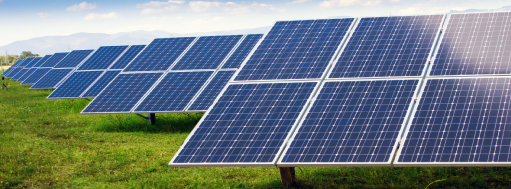OUR EXPERTS SPECIALIZE IN SOLAR PV AND COOL PV SYSTEMS
Cool Remodeling Experts specialize in installing Solar PV Systems and Cool PV Systems, that can provide you and your family with the following important benefits:

- Stop wasting your money on constantly increasing utility bills.
- Maximum energy performance efficiency in your home.
- Maximum comfort for you and your family at home.
- Highest level of product quality, efficiency and reliability.
- Well-known brands supported by local product distributors.
- Best product and service warranties supported by manufacturers.
- Low product acquisition and maintenance costs.
- Product rebates and Federal Tax Credits whenever applicable.
- Best product and service value for your money.
- Best return on your long-term investment.
- Peace of mind knowing that you do the right thing.
PRODUCT INTRODUCTION
Installing a Solar Photovoltaic System, or Solar PV System, is an important investment to ensure your Home Energy Efficiency.
Since energy efficiency and saving money by lowering utility costs became a priority, many homeowners chose to install a Solar PV System which offers substantial energy-saving benefits by eliminating or minimizing electricity costs from local utility companies.
Before installing a solar PV system, be sure to speak with an Energy Efficiency Consultant about the current level of your home energy efficiency.
The energy efficiency consultant will help you to identify all areas of energy inefficiency in your house and potentially save you tens of thousands of dollars in the future.

Cool Remodeling YouTube® Video Library
© 2024 Copyright Owned By The Video Publisher
HOW DOES A SOLAR PV SYSTEM WORK?
Solar PV Systems use Photovoltaic Cells, or PV Cells, to convert sunlight into electricity. The PV cell consists of one or two layers of a semi-conducting material, usually silicon. When light shines on the cell, it creates an electric field across the layers causing electricity to flow. The entire process works as follows:
- Solar PV panels collect the sun rays from the sun and create Direct Current or DC electricity.
- The inverter receives the DC electricity and converts it to Alternate Current or AC electricity.
- The AC electricity travels to the electrical service panel in the house.
- The electrical service panel distributes the AC electricity throughout the house.
- The unused portion of AC electricity is transferred from the electrical service panel to the utility company via the grid.
- The utility company stores the excess electricity and gives the homeowner a credit toward future use.
- Later, when the homeowner will use more electricity from the utility company, the credit will apply first and the net balance will become the next electricity bill.

Cool Remodeling YouTube® Video Library
© 2024 Copyright Owned By The Video Publisher
BASIC ELEMENTS OF A SOLAR PV SYSTEM
Basic elements of a Solar PV System are:
- Solar PV Panels.
A Solar PV Panel generates electricity for homeowners. Since most solar panels produce Direct Current, or DC Current, it must be converted into an Alternating Current, or AC Current, because all home appliances and devices work only on AC Current. - Inverter Or Micro-Inverters
Inverter is used to convert electricity from DC to AC. During the conversion process there is a certain amount of energy loss which may reach about 15%. - Electrical Conduits.
Electrical conduits connect the Solar PV System to the electrical service panel in the house.

Cool Remodeling YouTube® Video Library
© 2024 Copyright Owned By The Video Publisher
A CLOSER LOOK AT A SOLAR PV PANEL
Solar PV Panels, or Solar PV Modules, are devices that absorb sunlight as a source of energy and convert that energy into electricity.
They are called "solar" panels because they absorb the energy from the Sun, called Sol by astronomers.
Some scientists call these panels “photovoltaic” which means "light-electricity”.
A Photovoltaic (PV) Module or a Solar PV Panel, contains 60 or 72 Photovoltaic Solar Cells, depending on a specific manufacturer.

The Anatomy Of A Solar PV Panel

- Frame
- Glass
- Encapsulant
- Solar Cells
- Encapsulant
- Back Sheet
- Junction Box

Cool Remodeling YouTube® Video Library
© 2024 Copyright Owned By The Video Publisher
WHAT IS A SOLAR CELL?
Solar Cells are small, square-shaped panel semiconductors made from silicon and other conductive materials, manufactured in thin film layers. When sunlight strikes a solar cell, chemical reactions release electrons, generating electric current.
Solar cells are also called Photovoltaic Cells or PV Cells, where “photo” means "light" and “voltaic” means "electricity". A cross-section of a Solar PV Cell is illustrated here.
Photovoltaic Cells generate electricity directly from visible light by means of the Photovoltaic Effect and can be found on many small appliances such as calculators, children’s toys, torches and satellites, etc.
A group of PV Cells connected electrically and placed into a frame is called a Solar PV Module, or a Solar PV Panel, which can then be grouped into larger groups of modules to form a Solar PV Array.
Cross Section Of A Solar Cell

Cool Remodeling YouTube® Video Library
© 2024 Copyright Owned By The Video Publisher
THREE TYPES OF SILICON MATERIALS USED IN SOLAR PV PANELS
There are different types of Solar PV Panels, based on three different types of Silicon Cells used, as illustrated below.
SOLAR CELLS

SOLAR PANELS

Cool Remodeling YouTube® Video Library
© 2024 Copyright Owned By The Video Publisher
WHICH TYPE OF A SOLAR PV PANEL IS MORE EFFICIENT?
Because of lower silicon purity and lower space-efficiency, Polycrystalline Solar PV Panels are less efficient then Monocrystalline Solar PV Panels. You generally need to cover a larger surface to output the same electrical power as you would with a solar panel made of monocrystalline silicon.
MONO CELLS

- Monocrystalline Solar Panels include Mono Cells.
- During Mono Cells production, silicon is formed into bars and cut into wafers.
POLY CELLS

- Polycrystalline Solar Panels include Poly Cells.
- During Poly Cells production, fragments of silicon are melted together to form the wafers.
Cool Remodeling YouTube® Video Library
© 2024 Copyright Owned By The Video Publisher
WHAT IS ANNUAL DEGRADATION OF A SOLAR PANEL?
Solar panels wear out very slowly. Their effectiveness in producing electricity decreases annually between 0.4% to 1.5%, depending on the solar PV panel manufacturer. The annual decrease in efficiency to produce electricity by a solar PV panel is called Decreasing Annual Production Efficiency of a solar PV panel or Annual Degradation.
The Annual Degradation Factor enables solar panel manufacturers to adjust the production estimate for a solar PV system to more accurately reflect actual production over time. Based on an NREL Analysis which lists a median rate of annual degradation at 0.5% per year, an average solar PV system will produce 90% of its initial output after 20 years of service.

Cool Remodeling YouTube® Video Library
© 2024 Copyright Owned By The Video Publisher
WHAT IS AN INVERTER?
According to Energy Sage, Solar Power Inverters play an essential role in the functioning of all Solar PV Systems which generate DC electricity.
The main function of an inverter is to convert DC (Direct Current) electricity generated by solar PV panels into AC (Alternate Current) electricity.
Homeowners can only use AC electricity at home because all home appliances, lighting and electronic devices work only on AC electricity.
Various types of inverters, micro-inverters, and power optimizers are discussed in more detail in Solar Inverters.

Cool Remodeling YouTube® Video Library
© 2024 Copyright Owned By The Video Publisher
WHAT IS NET METERING?
Net Metering is a billing mechanism that credits solar energy system owners for the electricity they add to the grid. For example, if a residential customer has a solar PV system on the home's rooftop, it may generate more electricity than the home uses during daylight hours. The Net Metering Process work as follows:
- Your solar PV panels on the roof convert the energy from the sun into DC (direct current) electricity.
- Inverter, which is an integral part of your solar PV system, converts the DC electricity into AC electricity (alternate current).
- You use the AC electricity in your house for all appliances.
- The unused portion of the AC electricity is transferred via your electrical meter into the electrical grid and you receive a credit on your account.
- Later, when you use electricity from the grid, the credit on your account will apply first, and you will only pay for the difference, i.e. the net amount. For this reason this process is called Net Metering.

Cool Remodeling YouTube® Video Library
© 2024 Copyright Owned By The Video Publisher
SOLAR PV SYSTEMS BENEFITS
According to EnergySage, Solar PV Systems offer many benefits to homeowners:
- Solar PV systems help homeowners to eliminate or substantially reduce the electricity bills.
- Solar PV systems are very durable and provide a great return on investment.
- Solar PV systems can be used for residential and commercial applications.
- Solar PV systems have been around for many years and became very efficient.
- Solar PV systems have no moving parts and require very little maintenance.
- Solar PV systems can produce electricity for 25 years and longer, provided there is no shading.
- Solar PV systems are connected to the grid which can be used as a storage of the unused portion of electricity.
- Solar PV systems can be installed on the roof of a house, or on the ground, or on a solar canopy.
- The cost of solar PV systems continues to go down while the cost of electricity from utility companies continues to increase.

Cool Remodeling YouTube® Video Library
© 2024 Copyright Owned By The Video Publisher
SOLAR PANELS PERFORMANCE AND QUALITY CHECKLIST
According to EnergySage, solar panels are a popular product among homeowners. There are many factors to consider when deciding which panels to purchase for your solar energy system.
There are several characteristics that influence how effective a panel is at converting sunlight into electricity as outlined in the Panel Quality Checklist.

PANEL QUALITY CHECKLIST
- Efficiency
- Quality
- Durability
- Performance
- Manufacturer
- Ratings
- Warranty
Cool Remodeling YouTube® Video Library
© 2024 Copyright Owned By The Video Publisher
SOLAR PANEL EFFICIENCY
Solar Panel Efficiency refers to the portion of energy in the form of sunlight that can be converted via photovoltaics into electricity. The efficiency of the solar cells used in a photovoltaic system, in combination with latitude and climate, determines the annual energy output of the system.
According to EnergySage, the most efficient commercially available solar panels on the market today have efficiency ratings as high as 22.8%, whereas many panels range from 18% to 22% efficiency rating. Simply put, efficiency (expressed as a percentage) quantifies a solar panel’s ability to convert sunlight into electricity.
Based on the Solar Panel Efficiency Chart below, three most efficient panels in the market today are SunPower ®, REC and Silfab® with maximum efficiency at 22% - 22.3%.
| EFFICIENCY RATING OF SOLAR PV PANELS BY SOLAR PANEL MANUFACTURERS | |||
|---|---|---|---|
| Solar Panel Manufacturer | Minimum Efficiency (%) | Maximum Efficiency (%) | Average Efficiency (%) |
| Canadian Solar® | 15.88 | 15.88 | 18.24 |
| Hyundai® | 19.20 | 20.60 | 19.90 |
| Panasonic® | 19.20 | 22.20 | 20.70 |
| Q CELLS | 18.60 | 20.90 | 19.75 |
| REC | 19.10 | 22.30 | 20.70 |
| Silfab® | 19.20 | 22.00 | 20.60 |
| Solaria® | 19.40 | 20.50 | 19.95 |
| Sun Power® | 20.30 | 22.80 | 21.55 |
| Tesla® | 19.30 | 20.60 | 19.95 |
Cool Remodeling YouTube® Video Library
© 2024 Copyright Owned By The Video Publisher
POPULAR PRODUCT BRANDS
Some of the most popular brands of Solar PV Panels are presented below in A to Z order.
SOLAR PV PANELS ARE SUBJECT TO HIGH QUALITY CONTROL STANDARDS
The Solar PV Systems Quality Control is a critical part of the manufacturing process to ensure their durability and cost-effectiveness. So, next time, when you purchase your Solar PV panels, select them wisely.

Cool Remodeling YouTube® Video Library
© 2024 Copyright Owned By The Video Publisher
SOLAR PV PANELS EXAMPLES
Several examples of Solar PV Systems installations are provided below.

Cool Remodeling YouTube® Video Library
© 2024 Copyright Owned By The Video Publisher
SOLAR PANELS PAYBACK PERIOD
The typical Solar Payback Period in the U.S. is between 6 and 8 years.
For example:
- Your cost of installing a solar PV system is $20,000.
- You will save about $2,500 per year on reduced energy bills.
- Your solar PV system estimated payback or “break-even point” will be 8 years ($20,000/$2,500 = 8).

Cool Remodeling YouTube® Video Library
© 2024 Copyright Owned By The Video Publisher
WHAT IS COOLPV®? © 2024 FAFCO®
FAFCO®, the oldest and largest US Solar Thermal Manufacturer, has changed the game in solar with a significant advancement in solar technology!
CoolPV® provides improved PV electrical output with energy to heat your water or your pool at the same time! The unique design provides unmatched performance and maximum energy output using the same roof space.

Using FAFCO®’s state of the art solar thermal technology and solar electric technology, CoolPV™ is an enhanced solar electric system that generates electricity and heats water using the same panel on the same roof space. Because the solar electric panel is “cooled”, it generates more electric power than a stand-alone solar electric panel. All you need is a load for the heated water like a water heater or swimming pool.
CoolPV™ can generate up to 4 times the energy of a stand-alone solar electric system! This Enhanced Solar Electric And Solar Water Heating System has completely changed the game for those who want to take advantage of solar to generate electricity and heat water at the same time using the same roof space!

Cool Remodeling YouTube® Video Library
© 2024 Copyright Owned By The Video Publisher
COOLPV® FEATURES AND BENEFITS
The many Features And Benefits of CoolPV® for residential and commercial use are summarized below:
Features:
- Produces electricity from the sun.
- Significantly reduces pool heating expenses.
- Combined solar electric and water heating system.
- Streamlined, low-profile, black frame appearance.
- Qualifies for multiple federal and state rebates and tax incentives.
- Turns your rooftop into an electricity and water heating generator.

Benefits:
- Can save about 50% or more on your electrical bill, based on a typical household usage.
- May eliminate pool heating costs and maximize your pool investment.
- May generate up to four times the energy from the same rooftop space, saving you more money.
- Maintains your roofline aesthetics and your home’s curb appeal.
- Reduces your monthly energy bills immediately, with multiple financing options available.
- Can significantly add to your home resale value.
Cool Remodeling YouTube® Video Library
© 2024 Copyright Owned By The Video Publisher
FINANCING OPTIONS FOR YOUR HOME ENERGY EFFICIENCY IMPROVEMENT PROJECTS
Once you decide to move forward with any type of a home energy improvement project, we will introduce you to the most suitable Financing Options in accordance with your specific needs. These options may include:
- No interest and no payment financing* for one year.
- Low payment options* with low interest rates.
- Secured* and unsecured financing loans.
* Subject to OAC (on approved credit).
Contact Us Today To Find Out Which Financing Option Will Be The Best One For You.
MEET SOLLY THE SEAL
Just in case you did not meet him yet, we would like to introduce you to Solly The Seal who is a very important member of the Cool Remodeling TM management team.
Solly’s main job is to approve all home energy efficiency products and provide his Seal of Approval.


WE ONLY WORK WITH ORGANIZATIONS AND BRANDS APPROVED BY SOLLY THE SEAL








































































































